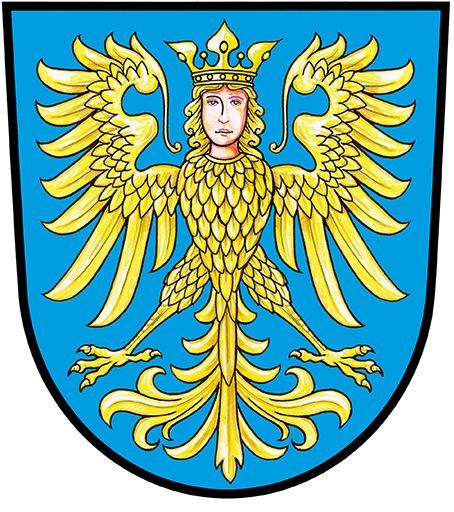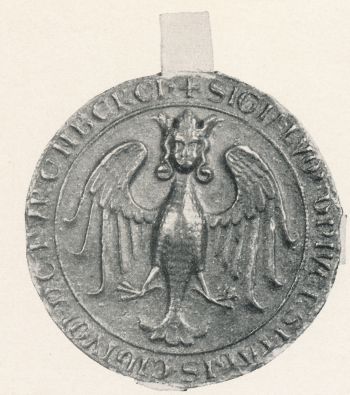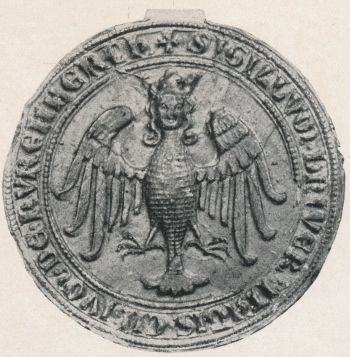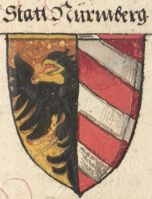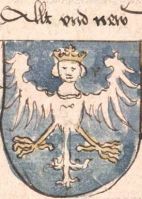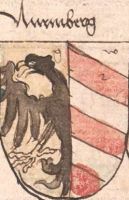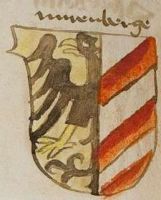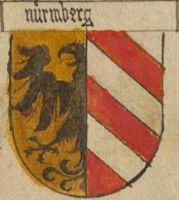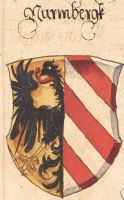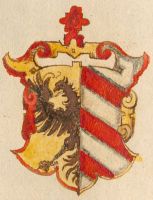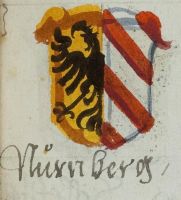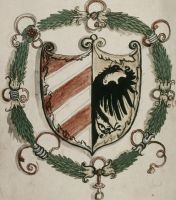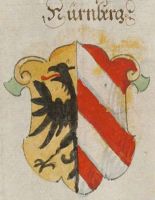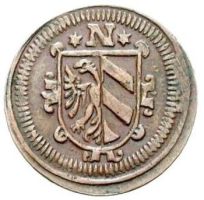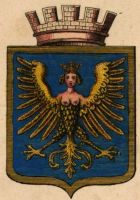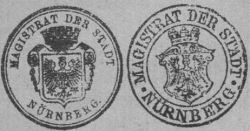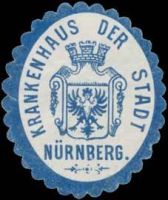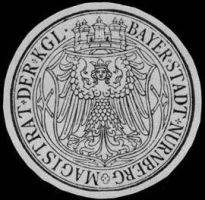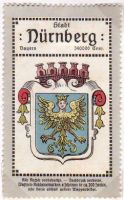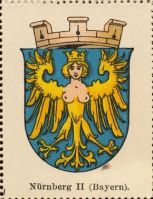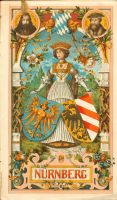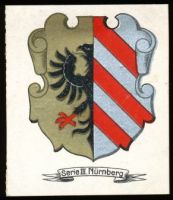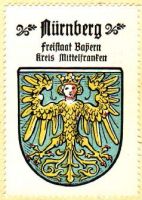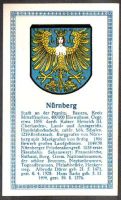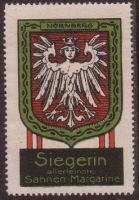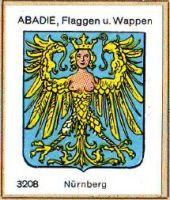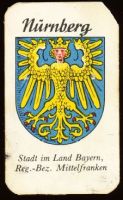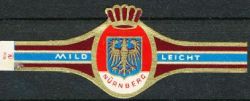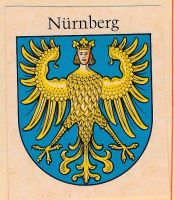Nürnberg
NÜRNBERG
State : Bayern
Urban District (Stadtkreis) : Nürnberg
Additions : 1920 Ziegelstein, 1922 Röthenbach b. Schwabach, Eibach, Reichelsdorf , Mühlhof-Krottenbach 1923 Almoshof, Lohe, Schnepfenreuth, Zerzabelshof , 1924 Buch , 1928 Höfles , 1930 Kraftshof , 1938 Laufamholz, 1972 Boxdorf (partly), Großgründlach, Neunhof, Brunn, Fischbach bei Nürnberg, Katzwang, Kornburg, Worzeldorf
| German |
Gespalten; vorne in Gold ein halber, rot gezungter und golden bewehrter schwarzer Adler am Spalt, hinten fünfmal schräg geteilt von Rot und Silber. |
| English | No blazon/translation known. Please click here to send your (heraldic !) blazon or translation |
Origin/meaning
Nürnberg became a city in 1219 and became one of the most important cities in present Bavaria, in which it was included in 1803 (previously it was an independent city). The city uses two different arms; the great arms with the eagle with a king's head and the small arms with the eagle and red bends. Both were adopted in 1936.
The great arms are derived from the oldest seals of the city, known since 1220. All great seals and secret-seals show the eagle with a kings's head. Smaller seals only use the imperial eagle. In architecture and other pictures the figure was often displayed as a harpy; i.e. with a woman's head and breasts. The present arms go back to the original seals. The origin of the figure is not known.
| Seal from 1253-1368 |
Seal from 1368-1808 |
The small arms are known as the real arms since 1240, where they are first mentioned. The arms showed a shield divided in 5 bends silver and red. The arms are probably derived from the arms of the first viscounts of Nürnberg. The demi-eagle, the imperial eagle, already appeared in pictures and architecture in the early 14th century. In some seals of possessions of the city (but not of the city itself) the arms are used since the 16th century. During the centuries the number of bends changed regularly and were finally fixed in 1936.
The arms in a 16th century manuscript
The arms in the Wappen-Sammlung (1900)
The arms in the Deutsche Wappen Kalender, 1904
The arms in an album +/- 1905
The arms by Hupp in the Kaffee Hag albums +/- 1925
The arms in the Abdulla album, 1928
The arms in the Abadie albums
The arms on a trade card from Bünting tea, 1960s
The arms in an album from 1968
Literature: Image by B. Fracasso; Stadler, 1964-1971, 8 volumes; Hupp, O: Kaffee Hag albums, 1920s; Schaffer, 1937
